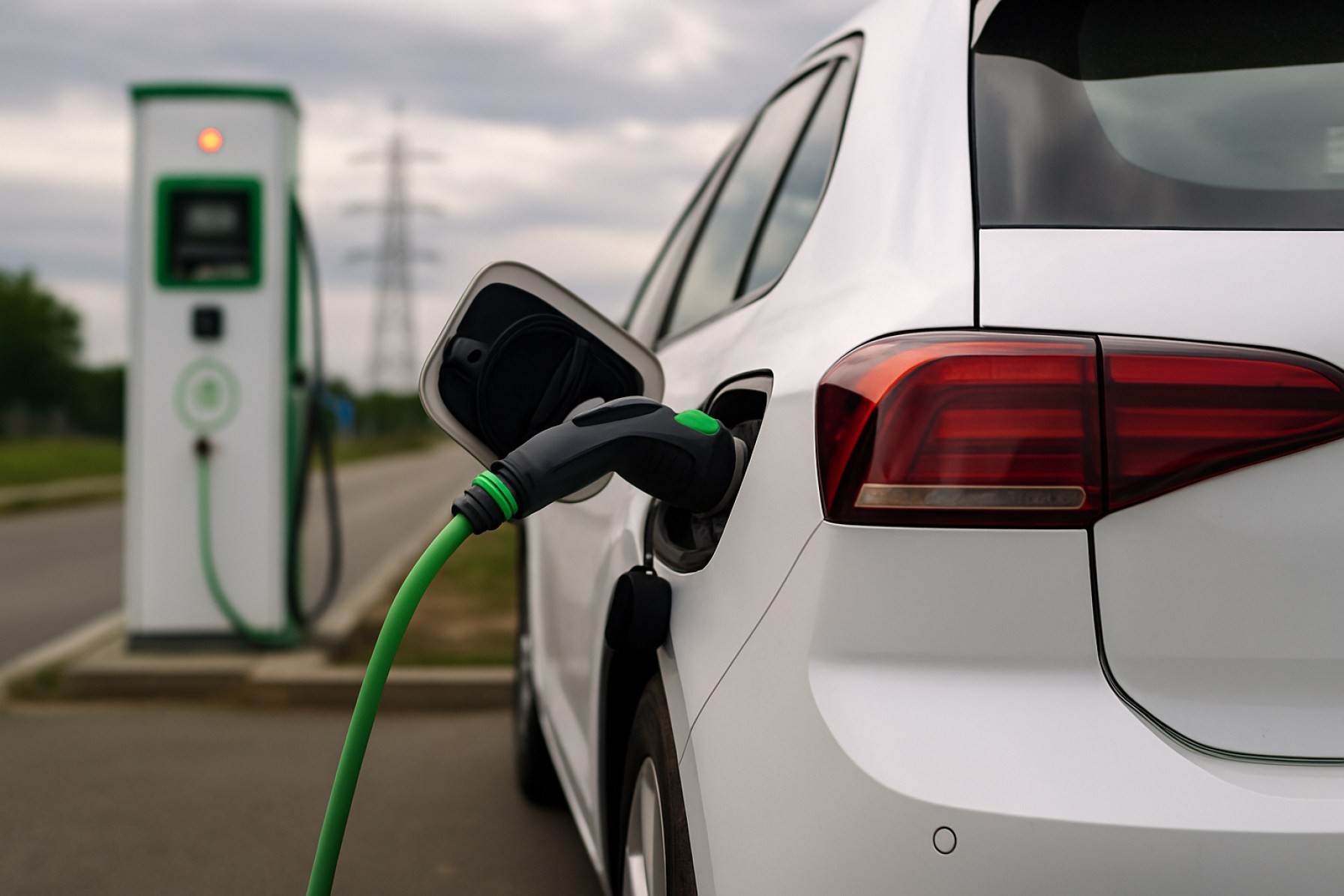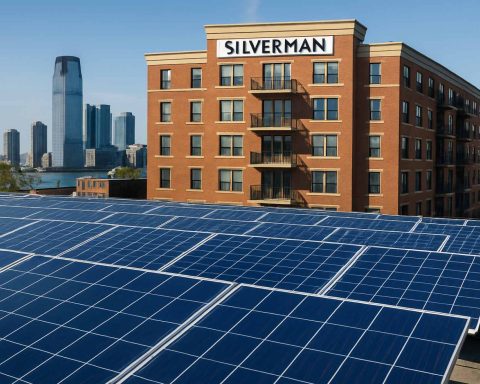- Tamil Nadu is emerging as India’s major hub for manufacturing advanced electric vehicle (EV) chargers, alongside its dominance in two-wheeler EV production.
- Leading companies and startups are innovating high-capacity chargers (60–350 kW), supporting both commuter vehicles and city fleets.
- Local firms now produce key EV charging components to reduce reliance on global supply chains, boosting export potential.
- The state hosts 1,448 public EV charging stations and continues to expand multi-gun charging solutions for cars and buses.
- Major investments from global companies like VinFast, Tata Motors, Hyundai, and Stellantis signal robust economic growth and investor confidence.
- Tamil Nadu’s innovation and infrastructure development are crucial for India’s energy transition and could make it a global leader in EV mobility.
Fluorescent lights flicker over assembly lines in Tamil Nadu as workers assemble a different kind of engine for the country’s next big leap: high-powered electric vehicle chargers. The region, already humming as India’s two-wheeler EV production powerhouse, is now transforming into a nerve center for the manufacturing of cutting-edge EV charging infrastructure.
With each passing day, the state’s factories don’t just roll out scooters; now, they churn out advanced chargers that promise to redefine both consumer convenience and industry pace. The push comes as major players like Delta Electronics and Eaton sense an unprecedented demand—not just at home, but increasingly beyond India’s borders. Tamil Nadu’s production corridors have become crucibles for innovation, where teams of engineers, some numbering 50-strong at Delta’s R&D division, sketch blueprints for chargers spanning 60 to 350 kilowatts. The high-capacity units are designed to slake the modern commuter’s impatience, offering charging speeds swift enough for India’s highways and adaptable enough for bustling city streets.
Inside Delta’s Krishnagiri plant, specialized lines currently produce 1,000 chargers monthly, primed for rapid scale-up as appetite rises. Meanwhile, newcomers emerge from the halls of IIT Madras, startups like Plugzmart expanding the horizon of local manufacturing. Collaborative ventures, such as the partnership between Epic Energy and Fenfeo Automotive, signal that Tamil Nadu’s innovation pipeline is far from drying up.
This surge isn’t just driven by domestic necessity. India’s infrastructure goals now intersect with global supply chain uncertainty; local manufacturers have begun to craft their own core rectifier modules, shielding themselves from disruptions abroad while sharpening their export edge.
On the ground, the numbers speak: Tamil Nadu boasts 1,448 public EV charging stations, ranking among India’s top five. Yet the story extends far beyond these data points. Multi-gun chargers, those capable of refueling multiple vehicles simultaneously, are now targeting both e-cars and public buses. Such advances cater to a nation that craves efficiency—travelers want minimal wait times, and city fleets require seamless operations.
Economic momentum amplifies these winds of change. Landmark investments have flooded the state in 2024 alone: $2 billion from VinFast, massive projects by Tata Motors, Hyundai’s ₹20,000 crore commitment, and significant plans by Stellantis. This financial influx builds on Tamil Nadu’s role as the birthplace for 70% of India’s EV two-wheelers—underlining why the charge into EV infrastructure feels both inevitable and strategic.
The broader takeaway is clear: the fusion of engineering ambition, investor confidence, and a rapidly expanding market could place Tamil Nadu—and India—at the heart of the global energy transition. As new factories rise and smarter, faster chargers sprout across landscapes, the future of mobility draws nearer. Watch the neon glow of these production lines. The next revolution in travel may very well charge up here first.
India’s EV Charger Boom: How Tamil Nadu’s Factories Are Shaping the Future of Global Transport
Introduction: Tamil Nadu’s Transition From EVs to EV Infrastructure Powerhouse
Tamil Nadu is rapidly transitioning from India’s established electric two-wheeler manufacturing hub to the national—and possibly regional—epicenter for advanced EV charging infrastructure. This transformation is backed by a flurry of innovation, foreign investments, and domestic entrepreneurship. Here’s a deep dive into the facts, trends, challenges, and practical takeaways surrounding Tamil Nadu’s rise and its implications for EV charging in India and beyond.
—
Key Facts Not Fully Explored in the Source Article
1. Evolving Government Support and Policy
– FAME II Policy Impact: India’s Faster Adoption and Manufacturing of Hybrid and Electric Vehicles (FAME II) scheme has directly incentivized EV and charging infrastructure manufacturing, providing subsidies on both vehicles and chargers.
– TN EV Policy: Tamil Nadu’s 2023 EV Policy promises land incentives, tax exemptions, and subsidies for charging network setups. The state targets 150,000 public and semi-public chargers by 2030 (source: Government of Tamil Nadu and India.gov.in).
2. Types & Specs of Chargers Produced
– Ultra-Fast Charging Standards: Tamil Nadu’s plants produce chargers up to 350kW—comparable to global benchmarks (e.g., Tesla Superchargers, European Ionity Network).
– Multi-standard Capability: Chargers often support CCS2, CHAdeMO, and Bharat DC—meaning compatibility with most vehicles on Indian and export markets.
– Smart Capabilities: Many locally assembled chargers come with RFID, remote diagnostics, OTA software updates, payment integration, and load balancing for grid-friendly performance.
3. Export and Supply Chain Expansion
– Export Destinations: Chargers from Tamil Nadu are shipped regionally (e.g., Southeast Asia, Middle East, Africa) where similar EV adoption curves are expected.
– Localizing Critical Components: By manufacturing power modules, semiconductors, and controllers locally, India hedges against global chip shortages and supply crises.
4. Market Trends and Forecasts
– EV Charger Market Growth: India’s EV charger market is projected to reach $14.2 billion by 2030, growing at a CAGR of 46% (source: Precedence Research).
– Job Creation Impact: The sector could add over 50,000 high-skilled jobs in engineering, R&D, and manufacturing, particularly empowering youth in southern India.
– Integration With Renewable Energy: Tamil Nadu, a renewables leader (especially in wind and solar), is increasingly pairing EV chargers with green energy for cleaner mobility.
5. Real-World Use Cases & Tutorials
How-To: Charging Your EV in Tamil Nadu
1. Locate a public charging station using apps like Tata Power EZ Charge, Statiq, or inbuilt vehicle navigation.
2. Authenticate via app or RFID for secured usage.
3. Plug in your vehicle—multi-gun chargers allow multiple cars or buses at once.
4. Monitor charging status on screen or in the app; pay digitally.
5. For ultra-fast (350kW) chargers: Get up to 80% charge of a typical EV in under 30 minutes.
6. Security, Safety, and Sustainability
– Safety Compliance: All chargers adhere to stringent BIS and IEC standards with auto cut-off, surge protection, and physical safety interlocks.
– Environmental Considerations: Local makers increasingly use recyclable materials, energy-efficient components, and are mandated to use renewable electricity for factory operations.
—
Pressing Reader Questions—Answered
Q1: How does Tamil Nadu compare internationally in charger production?
A: Tamil Nadu is Asia’s fastest-growing EV charger manufacturing hub (after China), rivaling Poland and Germany in export volume for certain categories (source: IESA, Indian Automotive Research body).
Q2: Will local chargers work with all EVs?
A: Most public installations in TN support global open standards (CCS2, Bharat DC, CHAdeMO) ensuring compatibility with 95% of cars on India’s roads and key export models.
Q3: What if there are grid issues?
A: New “smart” EV chargers prioritize load management and support battery backup, solar integration, and demand-based charging—reducing grid stress and blackout risks.
Q4: Are Indian-made chargers reliable for extreme climates?
A: Yes—local production ensures chargers are tailored for tropical conditions, heavy rain, and dust, unlike some imported alternatives which struggled with local weather.
—
Pros & Cons Overview
Pros:
– Universal charger compatibility.
– Fast rollout and local support network.
– Lower costs vs. imports.
– Job and technology ecosystem growth.
– Reduced dependence on imports and vulnerable supply chains.
Cons:
– Initial gaps in repair infrastructure in non-metro/rural areas.
– Lag in full grid upgrades may slow ultrafast charger adoption.
– High up-front capex for private fleet operators.
– Competition from global giants (ABB, Siemens) which may outspend on R&D.
—
Quick Tips and Life Hacks
1. Plan Your Routes: Use aggregator apps to map chargers along highways—public stations are growing, especially on Chennai-Bangalore and Chennai-Coimbatore routes.
2. Leverage Government Incentives: Those deploying chargers (residential or commercial) in TN can claim state and central subsidies—check current policies before purchase.
3. Watch for Upgrades: Factories in TN roll out firmware updates for chargers—always check for app notifications to get quicker charging and new payment options.
4. Go Green: Pick chargers located next to solar or wind-fed substations for lower-carbon travel.
5. Business Opportunity: Commercial spaces (hotels, malls) adding charging stations boost footfall and revenue streams; research partnership deals with local manufacturers.
—
Actionable Recommendations
– For EV Owners: Download and preload multiple charging station apps for seamless travel.
– For Fleet Operators: Invest early in local charger networks—leveraging tax breaks and scaling as demand surges post-2025.
– For Entrepreneurs: Partner with local startups for franchise or tech collaboration; the support ecosystem is pro-business and open to exports.
– For Investors: Watch Tamil Nadu’s charger manufacturing space for unicorn potential—local firms are already partnering with global automakers and energy giants.
—
Final Insights & Predictions
– Tamil Nadu is on track to lead India and potentially South Asia in both EV adoption and infrastructure exports by 2025.
– Edge in R&D and local component production will make the region resilient to global supply shocks and open new export markets.
– Integration with renewables will attract further investments and green branding, setting new global standards for sustainable charging.
Explore latest government EV policies and funding updates at india.gov.in.
Stay charged, stay ahead—the next revolution in travel is gearing up right now in Tamil Nadu.










